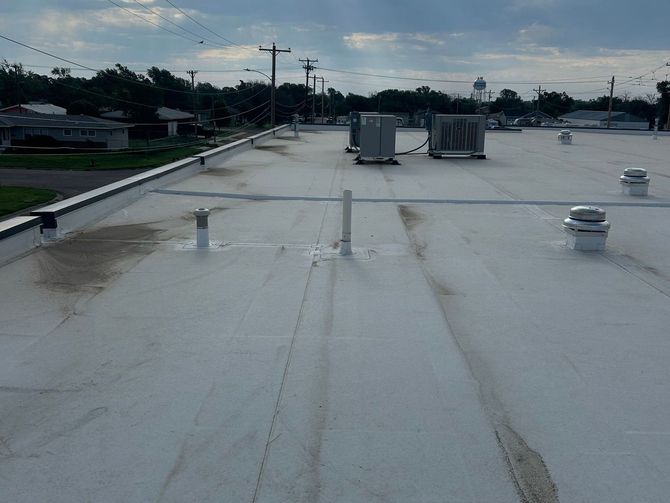Flat roofs have gained popularity in recent years for commercial properties due to their numerous advantages, such as cost savings, low-maintenance needs, and versatility. This article highlights why flat roofs are a smart investment for your commercial building, offering long-term savings and functionality.
Advantages of Flat Roofs for Commercial Buildings
Flat roofs offer significant advantages for commercial buildings, including easier installation. Since they are quicker to install than pitched roofs, flat roofs help reduce labor costs and installation time, making them a practical and efficient choice for commercial properties.
Another major benefit of flat roofs is their ability to maximize available space. The flat surface can be utilized for purposes like placing HVAC systems, solar panels, or even developing rooftop gardens. This is especially valuable for commercial buildings in crowded urban environments.
Flat Roof Materials: EPDM, TPO, and PVC
Flat roofs are made from a range of materials, each offering specific advantages. The most popular materials for commercial flat roofing are as follows:
EPDM: The Durable Flat Roofing Solution
EPDM is a synthetic rubber material renowned for its strength and resistance to extreme weather conditions. Perfect for flat roofs in both cold and hot climates, EPDM is durable, easy to install, and low-maintenance, offering excellent protection against leaks.

TPO: Energy Efficiency and UV Resistance
TPO is a reflective material that boosts energy efficiency by reducing heat absorption. It’s ideal for areas with strong sun exposure due to its UV and ozone resistance. TPO also offers great puncture resistance and is durable in extreme weather.
PVC: Long-lasting Protection for Flat Roofs
PVC (Polyvinyl Chloride) is a highly durable material that resists water, fire, and chemicals. Known for its long lifespan, PVC is ideal for high-traffic areas due to its resistance to wear and tear. PVC offers excellent protection for flat roofs in harsh conditions and with heavy use.
Maintenance Tips for Flat Roofing Longevity
Flat roofs are low-maintenance but still require regular care to ensure their longevity. Here are some tips to keep your flat roof in the best shape possible:
- Inspect your roof regularly for debris, such as leaves or branches, that can block drainage systems.
- Keep gutters and downspouts clear of blockages to avoid water accumulation.
- Schedule annual roof inspections with a professional roofing contractor to check for signs of wear and tear.
- Make necessary repairs promptly to avoid further damage, especially if there are cracks or punctures in the roofing material.
Why Flat Roofs Are Cost-Effective in the Long Run
Flat roofs provide excellent value over time. Their lower initial installation costs and easier maintenance can save you money in the long run. The simplicity of inspections and repairs helps reduce ongoing expenses.
The flat roof offers the opportunity to use the space for energy-saving purposes, such as adding solar panels or HVAC systems. This can reduce energy costs, and flat roofs often help improve insulation, lowering heating and cooling expenses.
Choosing the Right Flat Roof for Your Commercial Property
Flat roofs provide numerous benefits for commercial buildings, from cost savings and ease of maintenance to versatility. Proper material selection and maintenance will ensure your flat roof remains functional and valuable for many years. Work with a knowledgeable contractor to ensure the right choice for your business.
Ready to learn more about flat roofing? Contact us today for a consultation, and let us help you choose the ideal flat roofing solution for your business!
#FlatRoofing #CommercialRoofing #RoofInstallation #EPDM #TPO #PVC #RoofMaintenance #EnergyEfficiency #BusinessRoofing